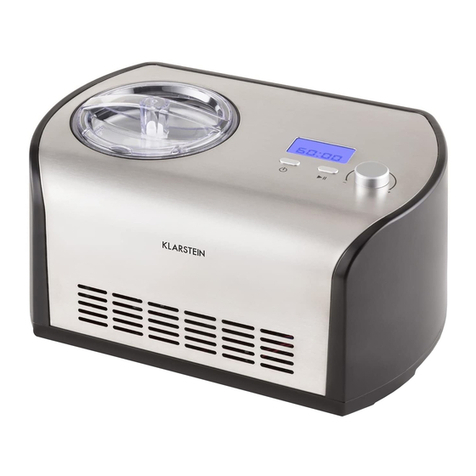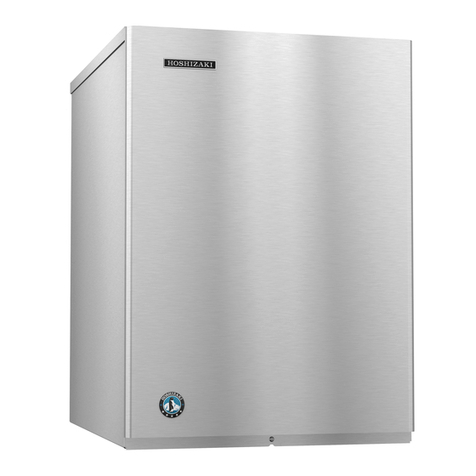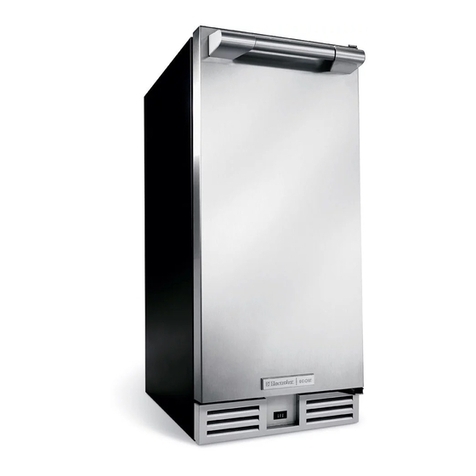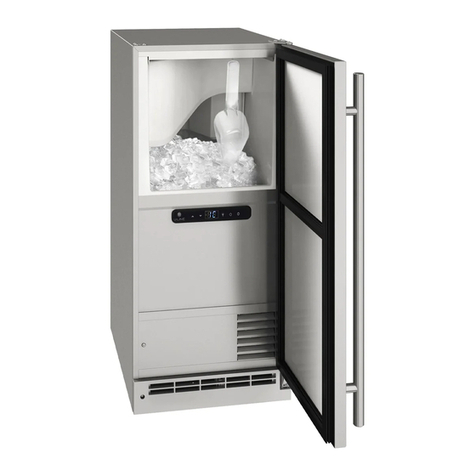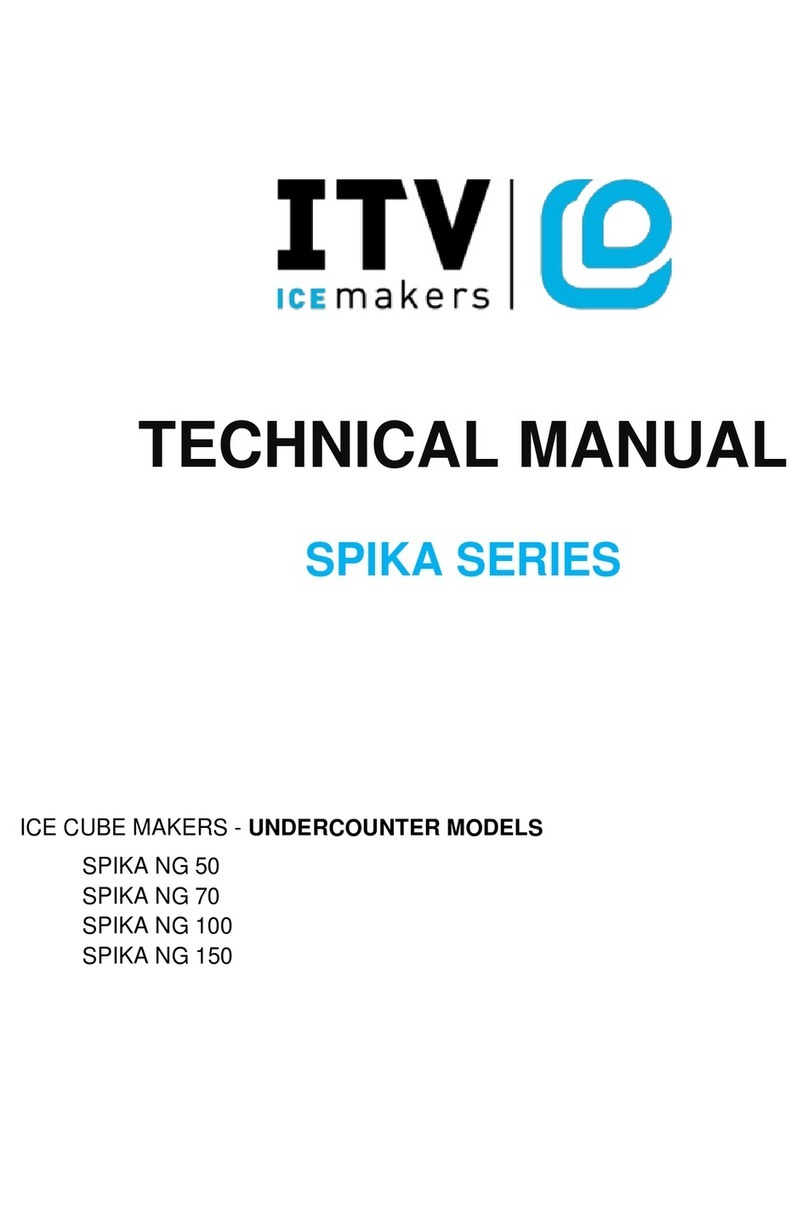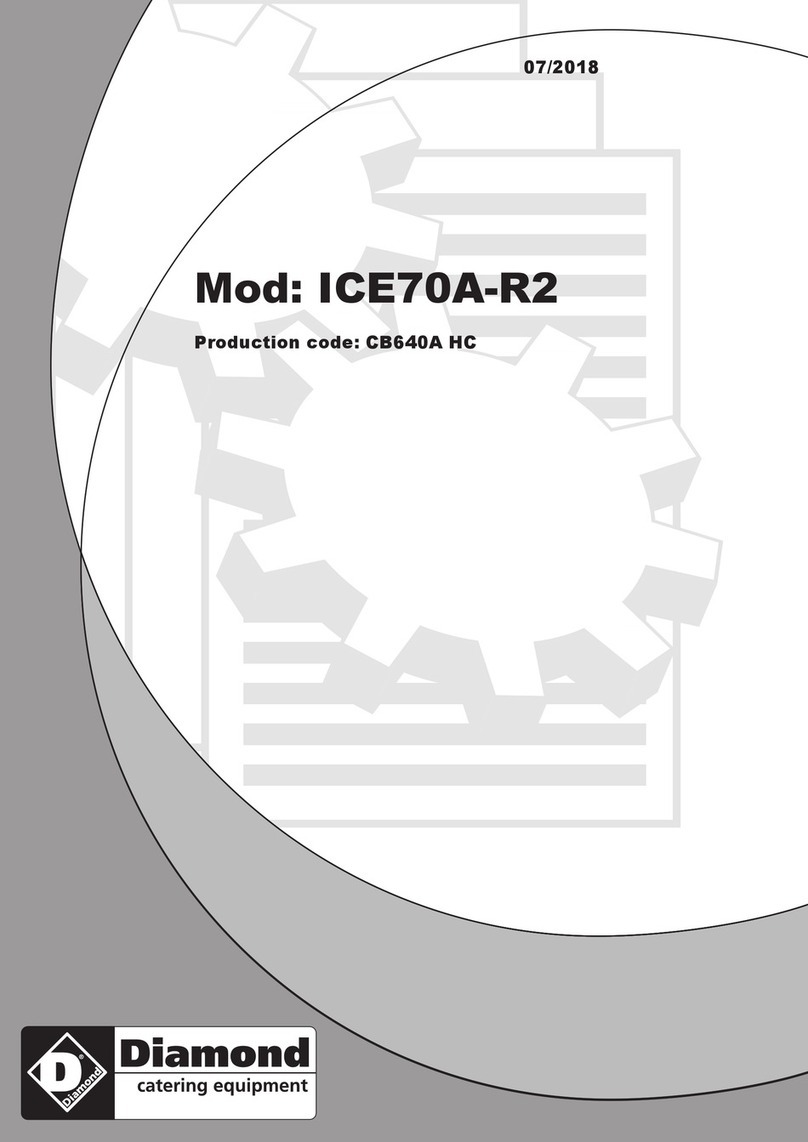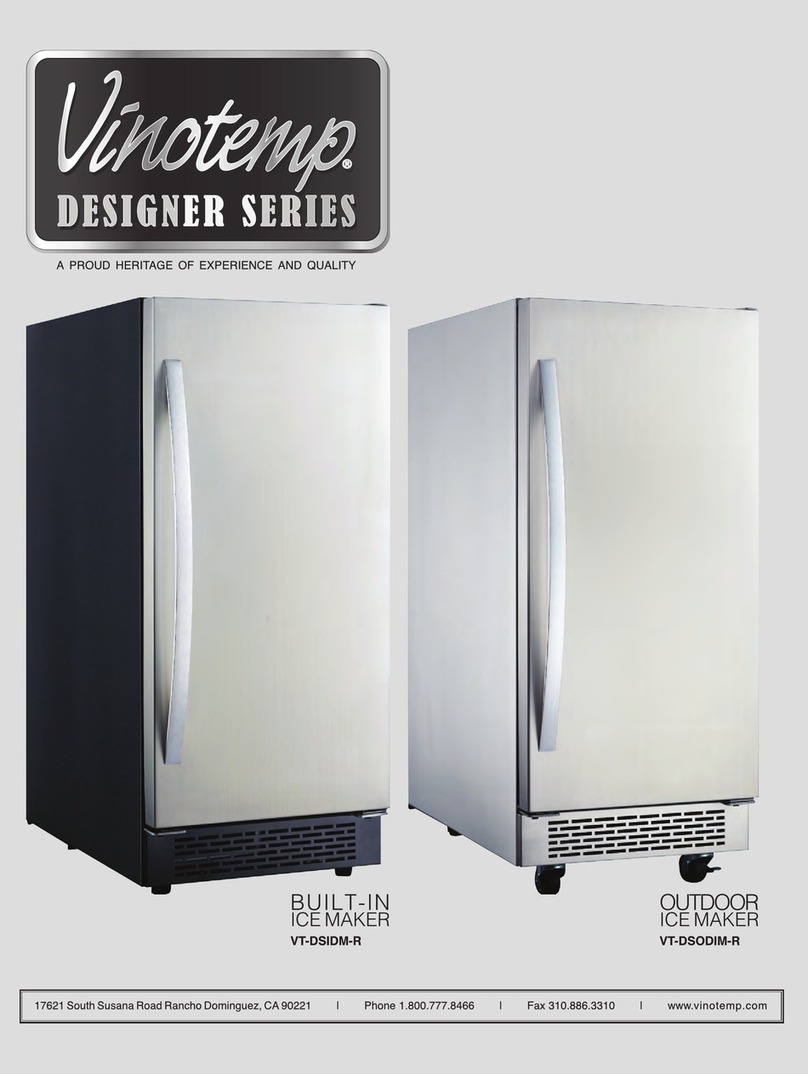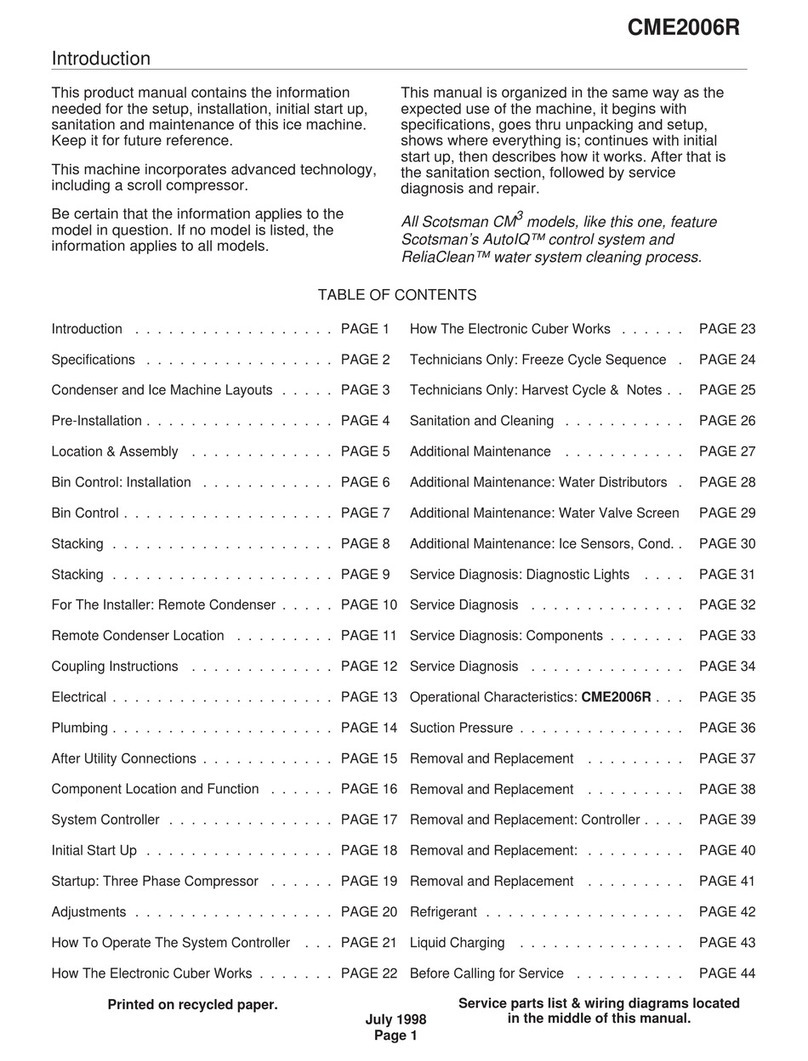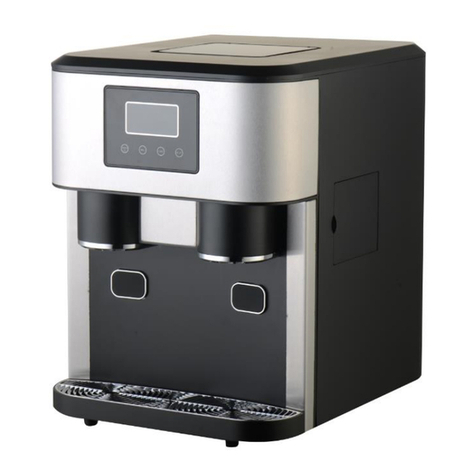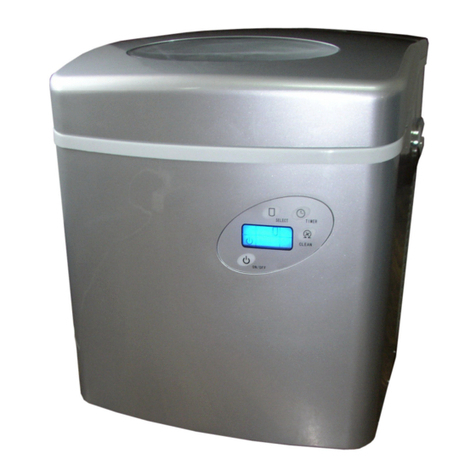Electron Microscopy Sciences Frigimat Cub Operating and maintenance manual

INSTRUCTIONAL MANUAL
CAT. 62057-10
Frigimat® Cub – Dry Ice Maker
Electron
Microscopy
Sciences
www.emsdiasum.com
Toll Free: 1-800-523-5874
Electron Microscopy Sciences
P.O. Box 550, 1560 Industry Road, Hateld, PA 19440
Tel: 215-412-8400 sFax: 215-412-8450

www.emsdiasum.com
Toll Free: 1-800-523-5874
Electron Microscopy Sciences
Tel: 215-412-8400 sFax: 215-412-8450
Introduction
Safety Symbols Used in this Instruction Manual
Please read and follow all safety precautions and directions as outlined in this instruction manual before using this product.
The symbols used in this manual are:
Must wear insulated safety gloves Must wear safety goggles
Recommended Safety Equipment to Wear & Warnings
WARNING:
• Always wear safety glasses and insulated gloves because of the pressures and temperatures that are
used when working with liquid and/or solid carbon dioxide (CO2).
• DO NOT tamper with the relief valve that extends from the brass tting. NOTE: relief valve set at 12 psi.
• NOTE: For convenience, the pressure gauge can be rotated in almost any direction. To allow for this, the
gauge mounting is normal loose and will not cause a leak.
How the FRIGIMAT® Cub Dry Ice is Produced
The FRIGIMAT® Cub – Dry Ice Make utilizes the Joule-Thomson effect to produce solid CO2from liquid CO2.
1. The CO2 enters the cavity through an orice and vaporizes at essentially atmospheric pressure.
2. The chamber is cooled by the vaporizing CO2.
3. Both the incoming CO2and the dry ice maker are continuously chilled until a temperature is reached at which point
the incoming CO2is directly converted to hard-packed carbon dioxide snow.
4. As more CO2 is frozen, the snow is compressed inside the chamber to produce the solid dry ice cake.
In only a few minutes, this compact device can be attached to a liquid CO2cylinder and will produce a ready-to-use 250
– 300 gram block of dry Ice. (Each 50 lb. cylinder makes from 10 to 16 blocks of dry ice). Set-up and use is safe and sim-
ple. Dry ice production can be viewed through the transparent polycarbonate body that secures without clamps or screws
or tools ensuring easy removal of the solid block of dry ice and connection from the CO2 cylinder. A rugged nickel plated
“pigtail” connects the Frigimat® Cub – Dry Ice Maker to the CO2cylinder valve. The system operates at very low pressure
(displayed on the built-in dial gauge) and incorporates multiple pressure relief safeguards.
The body of the FRIGIMAT® Cub – Dry Ice Maker is molded of polycarbonate plastic. The polycarbonate plastic can be
damaged by crazing (hairline cracks), caused by chemicals and their vapors. This weakens the dry ice maker and may re-
sult in explosion under pressure. NOTE: Before each use, inspect the product for any cracking or damage. Clean only with
mild detergent and water and then air dry.
The bottom half of the dry ice maker includes a neoprene safety strap with attached lanyard. In order to produce a dry ice
block, this strap must be used to secure the top and bottom halves together. Regularly check the Neoprene strap for dam-
age or cracks
.
NOTE: The best type of cylinder to use with this product is one equipped with a dip tube. This allows for the cylinder to be
upright. If your supplier does not carry this type of cylinder, you can use it by laying the “standard” cylinder on its side with
the valve lower than the cylinder.

www.emsdiasum.com
Toll Free: 1-800-523-5874
Electron Microscopy Sciences
Tel: 215-412-8400 sFax: 215-412-8450
Assembly Instructions
1. Attach one end of the “pigtail” to the threaded end of the brass tting assembly and thread the other end onto the
cylinder control valve of the Liquid Carbon Dioxide (LCO2) cylinder with dip tube.
2. Place the bottom half of the dry ice maker
body on a at surface. NOTE: The neo-
prene strap with lanyard is attached to the
bottom half.
3. Place the entire brass tting assembly
into its holding bracket on the bottom half
of the dry ice maker body with the pres-
sure gauge extending upward and the t-
ting with pigtail pointing outward. Ensure
that tting with O-ring seal is seated prop-
erly in groove in the dry ice maker body.
4. Place the top half of the body onto the
bottom half, engaging and trapping the
brass tting with O-ring seal.
5. Hook the Neoprene strap onto the cleat:
Hold both the top and bottom halves of
the body together on a rm surface and
pull upward on the lanyard to stretch the
Neoprene strap up and over the top half
of the dry ice maker body and down the
opposite side to hook the Neoprene strap
onto the cleat on the bottom half. Be sure
the Neoprene strap is completely held by
and centered on the cleat.
6. Stretch the Neoprene strap into the mold-
ed-in slots across each side of the top half
of the dry ice maker body.
Operational Instructions
WARNING: Do not operate the FRIGIMAT® Cub – Dry Ice Maker unattended.
7. Open the cylinder valve very slightly to start the LCO2 ow.
8. Maintain the pressure at or below 1 psi (ONE psi) above the resting pressure on the outer scale of the gauge.
NOTE: It is normal to see some CO2vapors leaking from the seams and to hear the sound of the CO2 owing.
Since the body of the unit is transparent, the CO2ice formation and chamber capacity can be monitored. The dry
ice block is fully formed when the pressure reading on the gauge rises rapidly and the sound of the gas ow be-
comes louder. Close the cylinder valve. It takes approximately 4-5 minutes to make each ice block.
9. To remove the dry ice from the dry ice maker:
a. Release Neoprene strap from the cleat and allow it to retract.
b. Remove top half of the body to expose the dry ice block.
c. Remove brass tting with pigtail assembly.
d. Invert bottom half of the body to release the dry ice block.
NOTE: The weight of dry ice block will be approximately 250 to 300 gm.
10. If making a second block, allow time for frost or ice to dissipate from the brass tting and body of the FRIGIMAT®
Cub – Dry Ice Maker. NOTE: Frost build-up can prevent unit from closing.
NOTE: The “Pigtail” is the long metal tubing with ttings on either end.

www.emsdiasum.com
Toll Free: 1-800-523-5874
Electron Microscopy Sciences
Tel: 215-412-8400 sFax: 215-412-8450
Liquid Content Variation in CO2
• When CO2 cylinders are lled with gas, the cylinder pressure is maintained at between 700 and 850 psi, at which about
30% of the cylinder volume is lled with gas while the remainder contains liquid.
• The Frigimat® Dry Ice Maker will produce dry ice only from liquid CO2. The amount of dry ice which can be made is a
function of the amount of liquid present in the cylinder. This in turn, is a function of the temperature of the cylinder.
• A cooler cylinder contains more liquid and thus can produce more dry ice. As the chart below indicates, liquid weight is
reduced at higher temperatures:
• At 60°F (15.6°C) liquid content is about 77%
• At 70°F (21°C) liquid content is about 70%
• At 80°F (26.7°C) liquid content is about 58%
NOTE: Above 88°F (31°C), the critical temperature, dry ice cannot be made and only gas is present.

For any questions or for ordering information,
please contact Customer Service at
1-800-523-5874
Thank you for choosing
Electron Microscopy Sciences!
www.emsdiasum.com
Tel: 215-412-8400 sFax: 215-412-8450
Electron Microscopy Sciences
P.O. Box 550
1560 Industry Road, Hateld, PA 19440
Electron
Microscopy
Sciences
Table of contents


